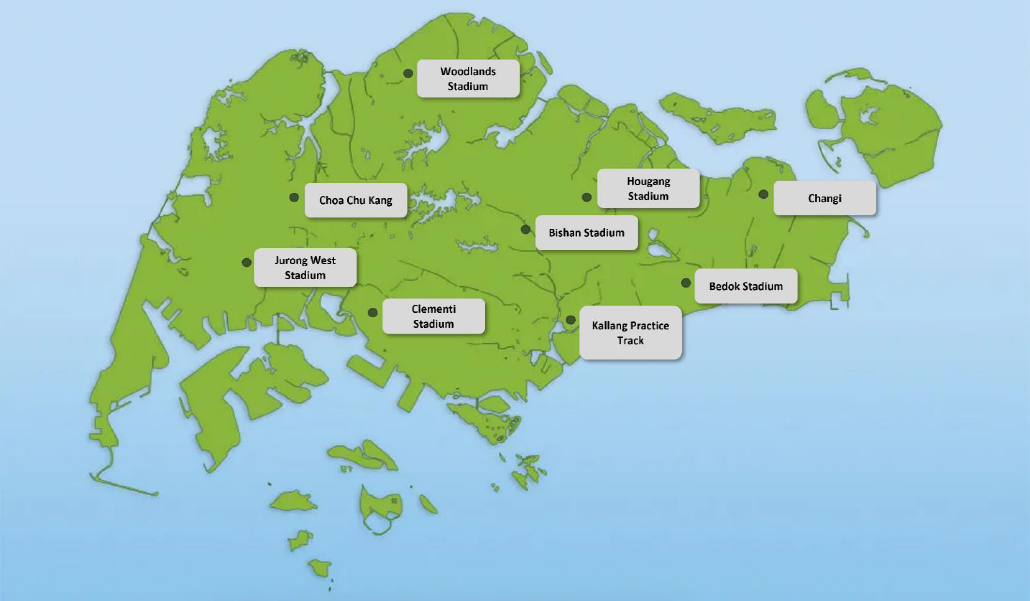A new heat stress advisory will provide real-time information about the risk of heat stress in various parts of Singapore.
The National Environment Agency (NEA) launched the advisory on the myENV app and MSS website on Jul. 24 to help the public adapt to rising temperatures.
Heat stress occurs when body is unable to remove accumulated heat effectively through the evaporation of sweat. It can cause heat-related illnesses.
Three levels of heat stress
Members of the public are encouraged to check the advisory when they are outdoors for prolonged periods of time, such as for a jog or a picnic.
There are three levels of risk of heat stress – low, moderate, and high.
Depending on the prevailing heat stress levels, the advisory will recommend users to adjust their activities, take protective action, and wear appropriate attire.

The advisory was developed by the Ministry of Sustainability and the Environment (MSE) and NEA, in consultation with the Ministry of Health’s (MOH) heat stress guidelines expert panel.
When and who to take note of heat stress?
You should check the latest heat stress levels closest to your location of activity before proceeding with the activity and continue monitor the levels during the activity.
The information will be updated every 15 minutes on myENV app and MSS website.
Heat stress levels should be monitored for prolonged outdoor activities. You don't have to be too worried about getting heat stress if you are engaging in transient outdoor movement, such as walking from one indoor location to another.
In general, the risk of high heat stress is highest from 11am to 3pm due to solar radiation.
While the advisory is for the general population, members of the public should also take into consideration individual circumstances, such as health, age, duration, and intensity of intended outdoor activities.
Groups that are more vulnerable to heat stress and would need to take extra precaution include:
- Elderly
- Children and infants
- People who are ill or recently recovered, or have chronic conditions
- Pregnant women
- Recent travellers from cooler climates
How heat stress is measured
Hot and humid weather increases the risk of heat stress on the human body.
To measure the risk of heat stress, an internationally recognised metric known as the Wet Bulb Globe Temperature (WBGT) is used for the first time for the general public in Singapore.
While most people are familiar with air temperature as an indicator of hot weather, it is insufficient to gauge the risk of heat stress, especially in a tropical country like Singapore, said NEA.

This is because the risk of heat stress is also dependent on weather conditions such as humidity, wind speed and solar radiation.
At the same air temperature, WBGT can be higher or lower depending on these other weather conditions.
WBGT is a composite metric which aggregates air temperature, natural wet bulb temperature and black globe temperature.
Another common composite metric is "RealFeel". It less comprehensive as it is only based on air temperature and humidity.
There are currently nine WBGT sensors installed around Singapore. They are mostly found at sport complexes, nodes for outdoor physical activities.

Over the next two years, NEA will be rolling out more of these new sensors, including at locations with higher human traffic.
According to NEA, high WBGT is observed more frequently in the traditional warm months of April and May in Singapore during the late morning to afternoon period.
Singapore is getting warmer
Singapore is getting warmer due to combination of factors such as global warming and urbanisation.
According to NEA, there is also a high risk of El Niño conditions in the second half of 2023, which would bring warmer and drier temperatures to Singapore.
The past decade was the warmest on record for Singapore.
On May 13 this year, the temperature at Ang Mo Kio reached a 40-year-high of 37°C, matching an all-time high.
Top images via Canva and NEA.
If you like what you read, follow us on Facebook, Instagram, Twitter and Telegram to get the latest updates.



